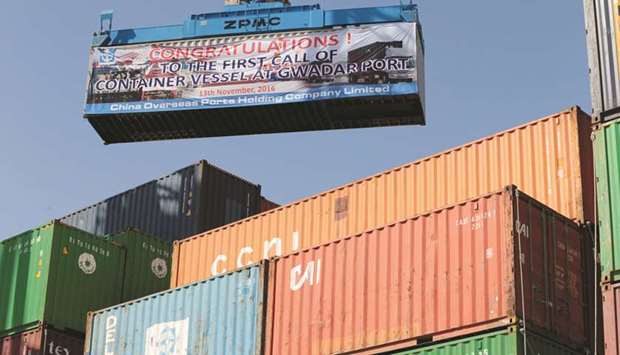The report, entitled “The Web of Transport Corridors in South Asia”, published by the Asian Development Bank, the United Kingdom’s Department for International Development, the Japan International Cooperation Agency, and the World Bank, discusses several economic corridors including CPEC.
The report states that in China, for instance, the construction of the National Express Network (NEN) increased real income across its prefectures by nearly 4%, on average – but still decreased real wages in many prefectures in either the urban or rural sector.
Only when transport corridors share prosperity widely, not only creating winners but also not leaving behind losers, can they spur equitable growth and help reduce poverty. Many corridor initiatives are under way or are being proposed, both in South Asia and around the world.
One ambitious proposal is to revive the Grand Trunk Road from Kabul, Afghanistan, to Chittagong, Bangladesh, connecting areas that are home to a significant share of the world’s poor.
Even more ambitious could be the plan for the New Silk Road Economic Belt. This large transport corridor connects Beijing all the way to Brussels. It also branches out into South Asian countries, as is the case with the China-Pakistan Economic Corridor (CPEC) initiative.
The investments associated with these and other proposed initiatives could require trillions of dollars. Such an amount exceeds the financial resources available in the foreseeable future to support corridors.
Moreover, it risks crowding out other public investment in critical areas such as education, water and sanitation, or energy.
By a conservative estimate, from 2014 to 2020 South Asia needs to invest at least $1.7tn in infrastructure. This is just to catch up with developing country peers, whose infrastructure may also be below “optimal” levels.
The importance of complementary interventions is also revealed by simulations for the prospective China-Pakistan Economic Corridor (CPEC) in Pakistan and the Kolkata Dhaka corridor between Bangladesh and India.
These simulations suggest that the proposed corridors could have widely diverse impacts on household expenditures, poverty, the inclusion of women in the labour market, and air pollution.
It also branches out into South Asian countries, as is the case with the China-Pakistan Economic Corridor initiative.
The investments associated with these and other proposed initiatives could require trillions of dollars. Such an amount exceeds the financial resources available in the foreseeable future to support corridors.
“The simulated impacts on per capita household consumption across districts in Pakistan and Bangladesh call for complementary interventions,” the report states.
“The largest economic gains from investing in transport corridors may arise from urbanisation and job creation around this new infrastructure, rather than from many more vehicles using it,” said one of the report’s authors, World Bank economist Martin Melecky, who added: “not all corridor investments are equally successful in creating large economic surpluses that spread fairly throughout society.”
The report notes that many transport corridors proposed across Asia would cost trillions of dollars to implement, far exceeding the financing resources available.
Hence, countries need to prioritise the most promising corridors that will deliver the expected transformative impacts for their economies and people.

